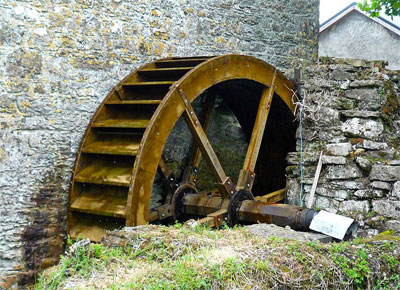 Bangor Historical Society held its monthly meeting on 11 February 2016 at the North Down Museum. The speaker was Dr Fred Hamond, who gave a very interesting, illustrated talk on ‘A Life in the Day of an Industrial Archaeologist’. He explained that he had trained as an archaeologist, but had moved into industrial archaeology after being asked to help with the restoration of Marybrook Mill. The subject of industrial archaeology covers a wide range of topics such as mining, milling, electricity, canals and communications. He showed a diagram that illustrated the fact that industrialization covered only a tiny part of human history, but yet had a very significant impact on society and our way of life.
Bangor Historical Society held its monthly meeting on 11 February 2016 at the North Down Museum. The speaker was Dr Fred Hamond, who gave a very interesting, illustrated talk on ‘A Life in the Day of an Industrial Archaeologist’. He explained that he had trained as an archaeologist, but had moved into industrial archaeology after being asked to help with the restoration of Marybrook Mill. The subject of industrial archaeology covers a wide range of topics such as mining, milling, electricity, canals and communications. He showed a diagram that illustrated the fact that industrialization covered only a tiny part of human history, but yet had a very significant impact on society and our way of life.
He then began to look at some of the sources that he uses in his work. The most valuable one is the Ordnance Survey maps from 1830s onwards, which can be used to compare the sites at different periods in their history. This was illustrated by the examples of Pettigo Mill and Glenarm mineral railway. Additional information could also be gleaned from the Grand Jury presentments.
Another useful source of information is the Valuation revision books. The mid-nineteenth century Griffith Valuation has been printed, while others are available on the PRONI website. Mr. Hammond then showed for a site in Offaly how it was possible to cross-reference this material with photographs to obtain information about a particular site.
Photographs are another very useful source. Modern photographs can be compared with older ones from collections in museums such as the Hogg and Green collections. One interesting illustration showed the Greenore Hotel in County Louth which was built about 1860 and demolished about 2006. Older and modern photographs showed how the building had been transformed during its history.
For even earlier times paintings and drawings can be very useful. We were shown a painting of the Long Bridge in Belfast about 1840 which stood in the area of the Queen’s Bridge. A bird’s eye view of Belfast in the 1860s shows buildings such as the gas works. An even older set of drawings by Hincks illustrated the processes involved in the production of linen.
Field surveys are also very important. Dr. Hamond might be called in by a local authority anywhere in Ireland or by a site owner who wanted to redevelop it. A detailed survey would be carried out and possibly a laser scan if the building had to be demolished.
Occasionally archaeological excavation might take place. When Annadale School in Belfast was demolished, the former brickworks on the site was excavated. The site of the kiln had been pinpointed by an examination of OS maps. Dr. Hamond was also involved in the listing of industrial sites.
Dr. Hamond then referred to some sites in North Down such as the old Harbour Master’s Office, now the Boat House restaurant, and the railway viaduct at Crawfordsburn. He completed his talk by referring to some recent projects such as Antrim Castle Gardens’ water pump, the steam powered cranes at the Paint Hall in Titanic Quarter and H.M.S. Caroline.
